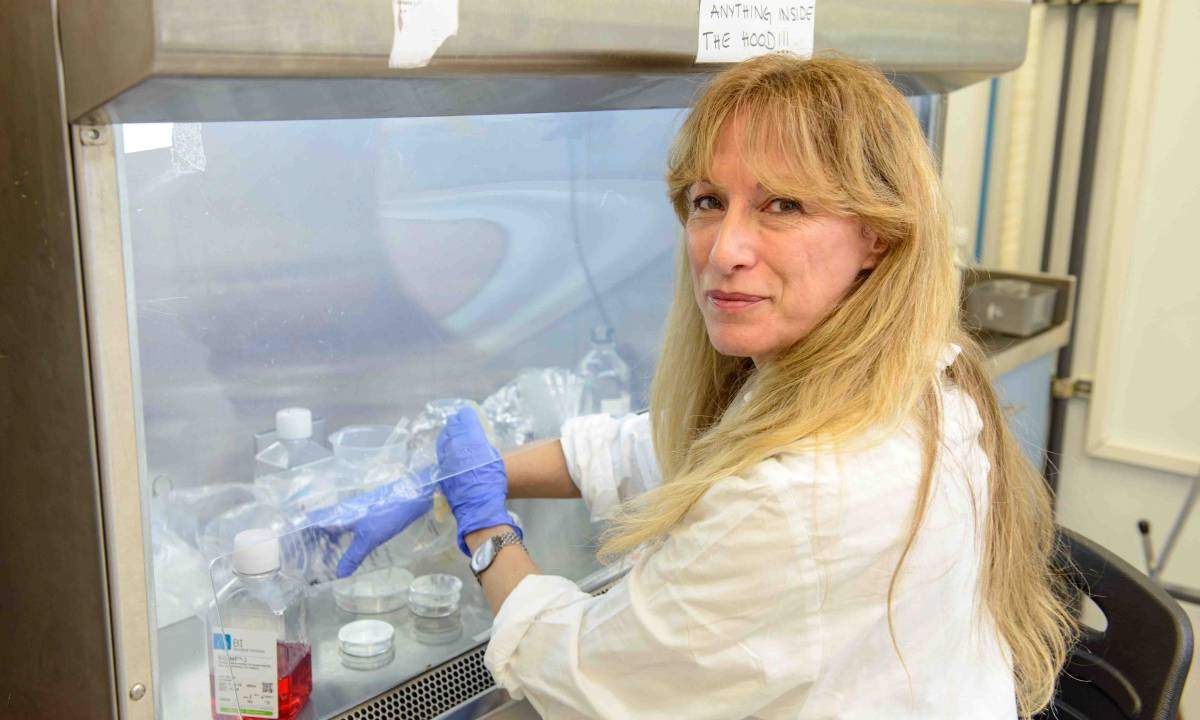Are you a journalist? Please sign up here for our press releases
Subscribe to our monthly newsletter:

Why is it that animals such as salamanders can regrow whole new organs – a tail for example – while we humans have limited damage-repair skills? Staff Scientist Dr. Rachel Sarig, who works with Prof. Eldad Tzahor’s group in the Molecular Cell Biology Department, says that part of the answer lies in the fact that the salamander’s adult cells are capable of returning to a younger, more stem-cell-like state in which they can divide and differentiate into new cells. Our cells have lost this ability over the course of evolution.
Working with Tzahor’s lab group, Sarig has been asking whether the ability to renew damaged organs could somehow be regained, and if so, how might we control that renewal, so as to prevent the life-threatening side effects that might accompany the cellular changes?
Tzahor’s lab investigates development, particularly that of the heart. The heart muscle does not renew itself, for example, after a heart attack; it is also one of the organs in our body that is relatively resistant to cancer. In mice, heart muscle cells continue to differentiate and divide until a week after birth, so repair can take place in the hearts of newborn mice, but not those older than seven days. Tzahor, Sarig and the lab group looked at this process in newborn mice and discovered that ERBB2, a protein known to play a role in the development of the heart, is also involved in the process of renewal. Heart muscle cells were not able to divide without this protein.
A new study that asks why, exactly, the heart is resistant to cancer
In research led by postdoctoral fellow Dr. Gabrielle D’Uva, which was published in Nature Cell Biology, the group activated the gene for ERBB2 – for a short time only – in mice with induced heart attacks. The hearts of these mice were returned to their former function without the scar tissue normally seen after a heart attack.
But Sarig cautions: “Like most genes that prompt cells to divide, ERBB2 is an oncogene – one that can also cause the unbridled growth of cancer. That is why we developed a method of expressing this gene for just a short period of time after a heart attack.” The adult heart cells had essentially been returned to an earlier, stem-cell-like state in which they could both divide and differentiate. But if the process is not rigorously and precisely controlled, there is always the danger that the cells will simply continue dividing – in effect, turning cancerous.
Earlier research that Sarig had led in the research group of Prof. Varda Rotter of the Molecular Cell Biology Department revealed another important insight into the connection between renewal and cancer. The results of the study, which appeared in the Journal of Experimental Medicine, showed that when adult cells are reprogrammed to behave like embryonic stem cells, they need a functioning copy of a gene known as p53, which is a tumor suppressor, to keep them from turning down the path to cancer.
Now Sarig is applying these insights to a new study that asks why, exactly, the heart is resistant to cancer. This organ contains a fair number of support cells that regularly divide: What prevents them from dividing out of control? What is it about certain organs that makes them much less likely to develop cancer than others? She hopes that the insights she and the group gain will aid in the understanding of how cancer is actively prevented in certain organs, as well helping to advance research into ways of renewing tissue without risking cancer.